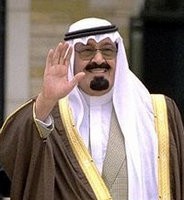The sudden death last week of Saudi Arabian Crown Prince Nayyif, the heir apparent to King Abdullah, caught many by surprise. But the latest royal shuffle, which sees Prince Salman becoming the new crown prince, and the even bigger transition expected to occur in the near future given the poor health of the 88-year-old king will likely feature far greater continuity and stability than the political transformations occurring in Egypt and other Arab countries.
The purported ideological tug-of-war taking place inside the royal family is a central theme of much of the commentary on Saudi succession scenarios, with the “reactionaries” and “conservatives,” supposedly led by the now deceased Nayyif, on one side, and the “liberals,” including King Abdullah and the “younger generation” of princes in their 50s and 60s, on the other. According to this narrative, whichever side wins will determine the state’s political trajectory, for better or worse. Last October, for example, when Nayyif became crown prince, Ed Husain of the Council of Foreign Relations described his appointment as “a step backward” that ended “the dream of bringing Saudi Arabia into the 21st century.” Taking that view to its natural conclusion, Simon Henderson, in an article in Foreign Policy titled “Good Riddance,” suggested that “we should be happy [Nayyif is] gone.”
In reality, the situation is far more nuanced, and evidence of unified and competing factions based on either political ideology or age -- the younger generation of senior princes versus the old guard still in power -- is hard to come by. Based on an informal survey I conducted during two years spent in Jeddah working on consulting projects with the Saudi government, and on several discussions this past year with well-informed Saudis, Nayyif was not necessarily perceived as an opponent of King Abdullah’s reform policies, and many considered him just the type of strong leader the kingdom needs. Moreover, given that the views of most royals on many key issues are generally only known by their close confidantes, it is hard to identify significant policy differences among the “top” 40 or 50 princes that would justify the ideological tug-of-war paradigm used by Husain and Henderson.

